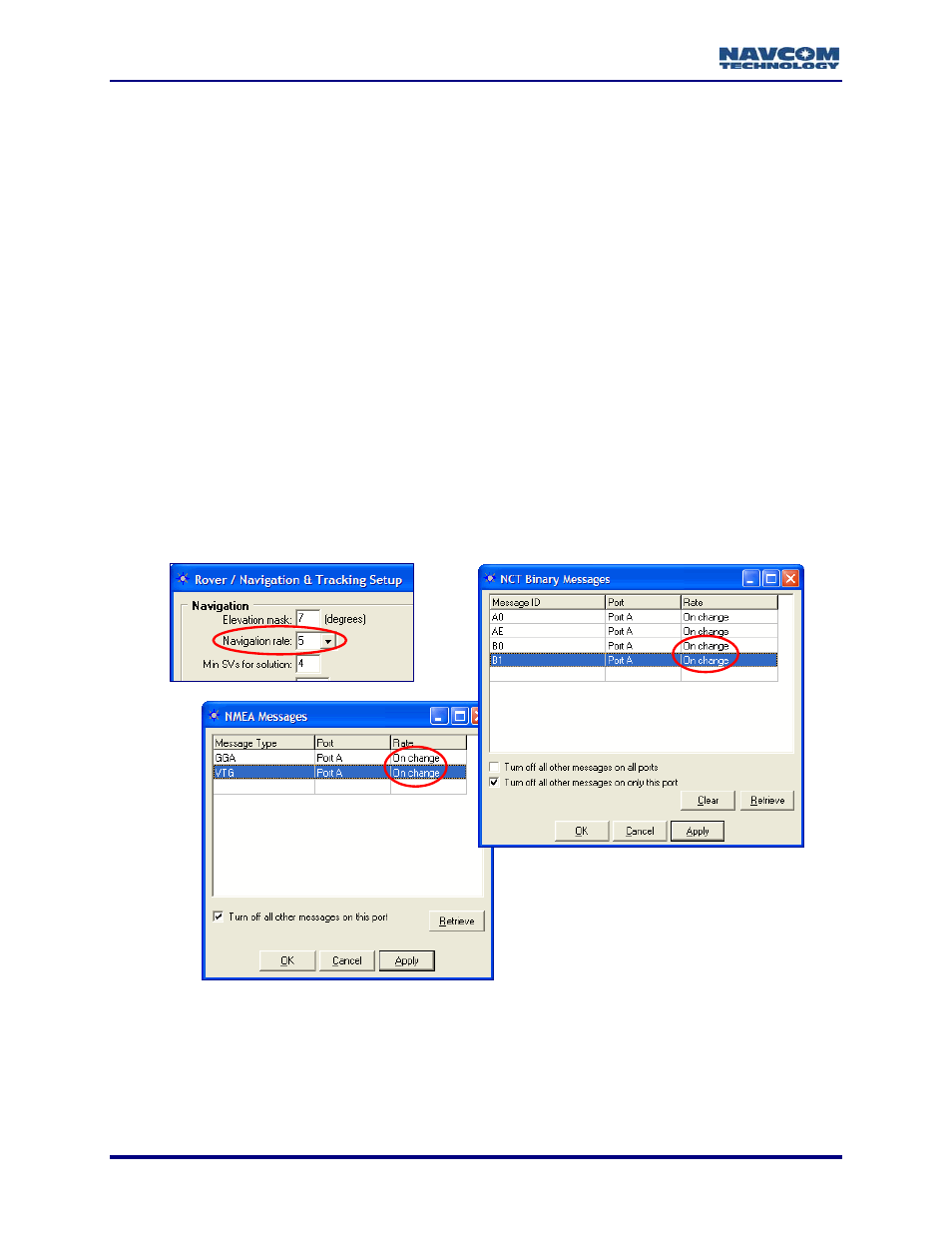Navigation rate and other options, Figure 9: navigation rate – NavCom StarUtil-2110 Rev.B User Manual
Page 20

StarUtil-2110 User Guide – Rev. B
Refer to Figure 8 for the options in the sections below:
Click the Apply button and then click the Retrieve button to confirm that the
receiver accepts new settings.
Navigation Rate and Other Options
9
Elevation Mask: Enter a value between 0 and 90 degrees to set the elevation angle at which
the receiver will start processing GPS data from satellites.
The default elevation mask is 7 degrees to prevent position jumps due to
frequent satellite re-acquisitions at lower elevation mask angle limits.
9
Navigation Rate: The number of navigation solutions per second. The available rates are:
1Hz (default), 5Hz, and 10Hz. The 5Hz and 10Hz navigation rates are purchased software
options. The upload of a purchased navigation rate changes the setting in the Navigation
rate field automatically to the purchased rate. Refer to Chapter 7 Load Software for
information about the purchase and upload of software options.
The Navigation Rate setting in the Rover / Navigation & Tracking Setup window
sets the output of the NCT Binary messages B0 and B1 and the NMEA messages
GGA, RMC and VTG provided that those messages are set to On Change in the
NCT Binary Messages window and the NMEA Messages window, respectively
(see Figure 9).
Figure 9: Navigation Rate
When a message is set to On Change, the data is output each time new data is
available as determined by the Navigation Rate setting. For example, if a position
is steadfast at N 33
º
50’20.18592” W 118
º
20’35.21218” for three seconds and
the Navigation Rate is 5Hz, a 0xb1 solution is output 1 time because the position
3-18
